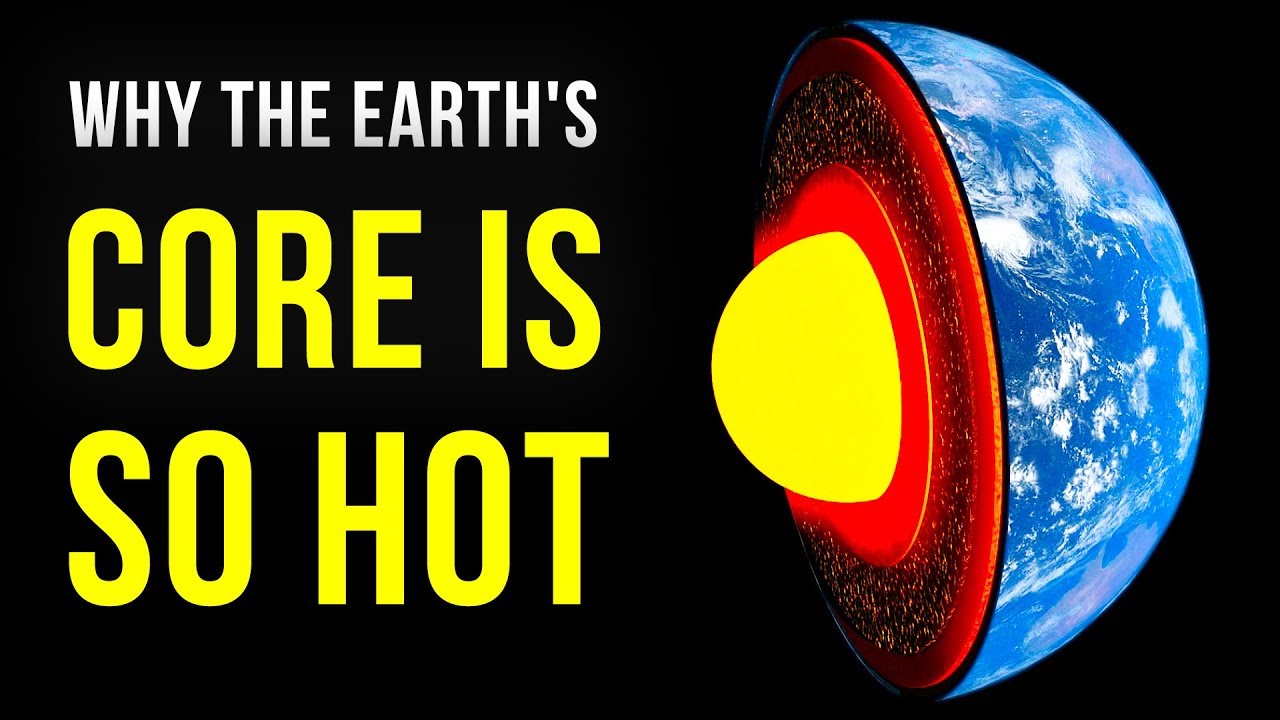Why the Earth’s Core Is Hotter Than the Sun
We’ve managed to go hundreds of thousands of miles into space, but when it comes to the earth, we’ve barely scratched the surface. Our planet’s core is a magnificent mystery filled with secrets. It’s time to figure them out.
The Earth’s inner core is an extra hot solid ball that has a radius just 30% smaller than the Moon. Scientists figured out that most of the Earth’s mass is located towards the center of our planet. The temperature of the inner core is about 9800°F. While the melting point of pure iron is about 2,800°F, at the core, its melting point is around 11,000° F.
Other videos you might like:
What Would a Journey to the Earth’s Core Be Like?

Who Lives In the Deepest Place On Earth?

What If The Sun Went Out for Just One Day

TIMESTAMPS:
The earth core is super heavy 0:20
How did iron get in there? 1:16
How do we know what size the core is? 2:27
How hot is it and why? 4:32
How does it remain solid? 5:28
Why is the earth still boiling? 5:50
A 2015 study from Durham University 6:53
#earthcore #earthfacts #brightside
SUMMARY:
-It’s estimated that the Earth’s mass is 5.6 sextillion tons. More than 80% of the core consists of one of the ten most common elements in our galaxy: iron.
-In 2013, Wendy Mao and her team from Stanford discovered a possible solution for how this happened. During their experiment, molten iron slowly squeezed through the silicate rocks, and they had their answer. It took millions of years for the iron to reach the center, so it happened at a snail’s pace.
-During an earthquake, shockwaves are spread through the planet. Seismologists study these vibrations and try to read the reflections on the other side. As science progressed, it turned out that picky “S-WAVES” could only go through solid material, and not liquid. So something molten was present in the center of the Earth that was preventing the vibrations from going through.
-The temperature of the inner core is about 9800°F. While the melting point of pure iron is about 2,800°F, at the core, its melting point is around 11,000° F. The fluctuation in those temperatures comes from factoring in the extreme pressure the iron is exposed to at the core.
-The reason it remains solid is because of the slow cooling of the outer core and its compression. The inner core spins faster than the Earth. That’s caused by the thermal activity inside our planet which creates the magnetosphere.
-The first reason the Earth is still boiling is that the core has remained hot from the time our planet was formed – roughly 4.5 billion years ago. Secondly, it generates heat from the friction of the dense materials as they move. And the last reason it’s so hot is from the decay of radioactive elements.
-A 2015 study from Durham University claimed that 90% of the Earth’s sulfur is in the core. When the impact happened, the Earth’s mantle melted, and some sulfur-rich liquid squeezed through the ruins and reformed it. Some of it was probably lost in space, but the rest sunk to the core.
Music by Epidemic Sound https://www.epidemicsound.com/
Subscribe to Bright Side : https://goo.gl/rQTJZz
—————————————————————————————-
Our Social Media:
Facebook: https://www.facebook.com/brightside/
Instagram: https://www.instagram.com/brightgram/
5-Minute Crafts Youtube: https://www.goo.gl/8JVmuC
Stock materials (photos, footages and other):
https://www.depositphotos.com
https://www.shutterstock.com
https://www.eastnews.ru
—————————————————————————————-
For more videos and articles visit:
http://www.brightside.me/



![[ID: jvNU5bwzclI] Youtube Automatic](https://bizimtube.com/wp-content/uploads/2021/03/id-jvnu5bwzcli-youtube-automatic-236x133.jpg)
![[ID: 0yCJMt9Mx9c] Youtube Automatic](https://bizimtube.com/wp-content/uploads/2021/03/id-0ycjmt9mx9c-youtube-automatic-236x133.jpg)
![[ID: vAJM5EdDwjU] Youtube Automatic](https://bizimtube.com/wp-content/uploads/2021/03/id-vajm5eddwju-youtube-automatic-236x133.jpg)
![[ID: LxOmofEFub4] Youtube Automatic](https://bizimtube.com/wp-content/uploads/2021/03/id-lxomofefub4-youtube-automatic-236x133.jpg)
![[ID: wFAh77GBsHs] Youtube Automatic](https://bizimtube.com/wp-content/uploads/2021/03/id-wfah77gbshs-youtube-automatic-236x133.jpg)
![[ID: tjwrG4Debc4] Youtube Automatic](https://bizimtube.com/wp-content/uploads/2021/03/id-tjwrg4debc4-youtube-automatic-236x133.jpg)
![[ID: _28bYGZtnU8] Youtube Automatic](https://bizimtube.com/wp-content/uploads/2021/03/id-28bygztnu8-youtube-automatic-236x133.jpg)
![[ID: 1e7bhUjUEJ8] Youtube Automatic](https://bizimtube.com/wp-content/uploads/2021/03/id-1e7bhujuej8-youtube-automatic-236x133.jpg)
![[ID: QjyCviSKY2U] Youtube Automatic](https://bizimtube.com/wp-content/uploads/2021/03/id-qjycvisky2u-youtube-automatic-236x133.jpg)
![[ID: -5i-vB4-kFk] Youtube Automatic](https://bizimtube.com/wp-content/uploads/2021/03/id-5i-vb4-kfk-youtube-automatic-236x133.jpg)
![[ID: covHhQgr5kU] Youtube Automatic](https://bizimtube.com/wp-content/uploads/2021/03/id-covhhqgr5ku-youtube-automatic-236x133.jpg)
![[ID: mX7FEHws43A] Youtube Automatic](https://bizimtube.com/wp-content/uploads/2021/03/id-mx7fehws43a-youtube-automatic-236x133.jpg)